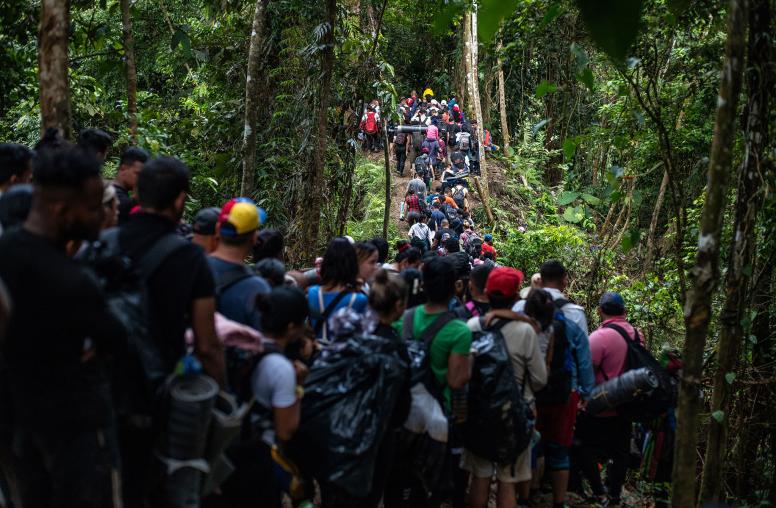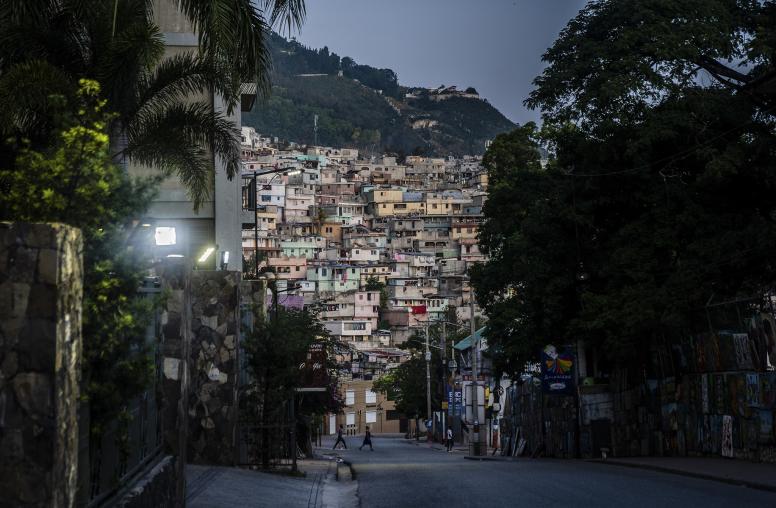Youth Mobilization Sparks Hope for Guatemala’s Democratic Future
A new generation helped propel President-elect Arévalo’s unlikely victory. Can they rebuild faith in Guatemala’s political system?
On August 20, Guatemalans voted decisively in favor of Bernardo Arévalo in their runoff presidential election, ushering in what will likely be the country’s most progressive president in decades. In just two months, Arévalo’s Movimiento Semilla party used its low-budget, social media-fueled campaign to propel him from obscure underdog candidate to a 20-point landslide victory.

While detailed demographic statistics from the Supreme Electoral Tribunal (TSE) have not yet been released, it’s clear that youth participation — both on the campaign trail and at the polls — was a critical component to President-elect Arévalo’s victory and Semilla’s legislative success, with the party winning 24 seats in 2023 compared to six in 2019.
Ixel Wer, the current national secretary of youth and interculturality for Semilla, firmly attributed their 2023 electoral success to youth participation: “Young people were the first to believe in Semilla and who had faith that we could govern. That faith and hope that they had in us … a big part of this victory is because they supported us in endless ways.”
With Semilla’s victories, Guatemala has suddenly been cast as a beacon of democratic hope for northern Central America. Irrespective of what happens in the coming months and years, Semilla’s massive mobilization of young people, many of which were participating actively in politics for the first time, is a win for Guatemala’s democracy.
Youth: A Demographic Left Behind
Opportunities for youth in Guatemala are generally poor. Young people average just nine years of schooling due to depleted education resources. And as one of the most unequal countries in the region, Guatemala’s economic and social sectors offer little by way of civic engagement and growth. Few young people earn enough to live independently, and only 4.5 percent complete university while the grand majority work in the informal economy.
According to several sources who spoke to USIP, these conditions were at the core of young people’s sense of desperation during this election. Javier Toledo, the director of projects at the youth-led nonprofit Jóvenes Contra la Violencia (Youth Against Violence), emphasized the frustration that young people feel over their lack of opportunities to transition into adulthood: “Youth are tired of the same old system.” According to Maria Luisa Méndez, the executive director of Paz Joven (Youth Peace), these conditions have worsened over time.
The Seeds of a Movement
The Semilla — or “Seed” — party was born out of the 2015 anti-corruption protests, which many mark as the origins of both the party and an inspired generation. The protests erupted following the release of corruption investigations conducted by the U.N.-mandated International Commission against Impunity in Guatemala (CICIG) that implicated then-President Otto Pérez Molina and resulted in his ultimate resignation. For many young people, Méndez said, “It was a pivotal moment.”
However, despite President Pérez Molina’s downfall, the next two Guatemalan presidents did not answer public calls for more transparent institutions and anticorruption measures. Thus, while the Semilla party’s history can be traced from 2015, the youth movement that later helped propel them to victory in 2023 did not develop linearly.
In 2019, then-President Jimmy Morales controversially ejected the CICIG from the country, causing the judicial body to lose governmental, international and private sector support. Youth organizations and anti-corruption organizing efforts were destabilized as a result, with their principal organizing and accountability mechanism now dissolved.
Later the same year, civil society organizations were hit again when the Trump administration discontinued funding for Guatemalan aid programs, which left many up-and-coming youth-led organizations without financial resources.
And finally, while the pandemic negatively affected youth organizing, it was also a foundational experience for a new generation.
“There were two waves,” explained Wer. The 2015 youth mobilization represented the first wave, while the second one propelled Semilla to electoral victory this spring and summer. While the two are connected, the eight years between them created a generational gap that effectuates important distinctions.
During the 2015 protests, it was primarily millennials who had their coming of age into civic participation. But many of Semilla’s current volunteers are Gen Z, and therefore were too young to take much notice of the 2015 protests, said Sebastián Hernández, former national secretary of Youth Semilla and a current party organizer.
Rather, both Wer and Hernández trace Gen Z’s political mobilization to the pandemic, where they witnessed firsthand the failure of the country’s health and education systems — and the seeming inability and unwillingness of the government to address it.
A Less Disillusioned Youth
These two waves also appear to correlate with different forms of engagement. Javier Toledo explained that while many politically inclined millennials began working in civil society organizations following their post-2015 disappointment, the newer Gen Z has shown more willingness to engage directly in politics — working in parties, choosing to vote (rather than abstain) and even running for election.
Maria Luisa Méndez expressed that previously, young people illustrated their discontent by not engaging with the system, particularly the electoral system. However, Méndez and Toledo said the current crop of younger people — those who were minors in 2015 and are voting for only the first or second time this year — have decided to take a chance on the democratic system. Unlike their older counterparts, Gen Z’s rejection of the current political status quo “has meant taking back hope in electoral processes,” said Méndez.
The Social Media Generation
While the demographic breakdown of the official election results has not been released yet, anecdotally, Ixel Wer is convinced that not only did young people go to the polls like never before, but they also played a key role in spreading the word about Semilla in their communities and households using information from social media.
Semilla’s low-budget campaign relied much more heavily on social media than its more established and pro-establishment competitors. These opponents, thanks to deeper wallets and closer ties with national media systems, were able to book spots on the radio, purchase television commercials and pay for billboards.
In contrast, Semilla leaned on Generation Z — perhaps the most connected generation in Guatemalan history — as both the masterminds behind the party’s communications strategy and as its most ardent consumers, sharers and posters.
The Semilla campaign was well known for its innovative videos and playful memes, and Hernández says that many Semilla candidates were able to dramatically grow their following thanks to videos that went viral on TikTok. Elena Motta, the 23-year-old congresswoman-elect who will become the youngest female congressperson in Guatemalan history, used social media to fuel her own campaign, brainstorming creative ideas to engage her followers. Thanks to this, Motta said, “The [Semilla] campaign has felt fresher, more genuine, more dynamic.”
Youth, even those who were too young to vote, served as catalysts for get-out-the-vote efforts within communities. Hernández explained how many adults initially learned about Semilla from their daughters or sons. Young people were taking a critical stance and convincing their parents to follow suit, not vice versa. After noticing this trend in the first round, the party capitalized on it more explicitly for the runoff, something which Arévalo described as “inverse indoctrination.”
While Semilla registered only 18,000 official volunteers, Wer recounted numerous spontaneous and “unofficial” youth-led initiatives to support their campaign. When the Semilla party could not officially campaign for 10 days between the first and second round due to an open investigation, young people across the country researched the party’s positions and created their own content on social media, held meetings and canvassed informally on their behalf.
Young people in rural areas walked long distances to speak to their neighbors and help answer questions about the candidates, as well as clarify the contradictory information many were receiving at the time. “[The youth] realized that there was no way their parents would check the information, so they went out to inform them. They helped us so much with this,” said Wer.
Generation Z’s ability to navigate contradictory — and often times false or misleading — information played a huge role in the election. According to Hernández, the younger generation “is better able to discern [disinformation and misinformation]. Because they have been more exposed, they are able to make their own judgements.”
In the last weeks of the campaign, as the two runoff candidates played a game of ping pong trying to keep the narrative on course or sway it into their favor, much of the public conversation was reduced to either spreading disinformation or combatting it. Both Méndez’s and Toledo’s organizations actively work to counter the spread of disinformation through curated campaigns and trainings. And they agree with Hernández: Gen Z is better at critically analyzing and responsibly consuming media content.
A Different Type of Participation
While it’s hard not to notice the wave of enthusiasm among young Guatemalans over the last few weeks, it’s important to note that turnout for the second round was just average — only two percentage points greater than previous runoff elections. In addition, according to TSE data, only about 50 percent of youth registered to vote, meaning over 1 million Guatemalans aged 18 to 25 did not register ahead of the March 2023 deadline, a time when Semilla’s rise to popularity was anything but imminent.
While youth mobilization around this summer’s elections in Guatemala might not have been of tidal-wave proportions, the evidence of young people’s enthusiasm and participation abounds. The Semilla party includes youth at all levels of party leadership, and Elena Motta spoke of meeting countless young people who had visited the capital for Semilla rallies because of the party’s youthful message and messengers: “It’s important for them to see other young people within the party. They get inspired.”
Semilla’s success with the support of young people is inspiring upcoming generations of Guatemalans to participate, and participate more actively, in democracy. The opportunity for young people to feel agency and to have a voice in the democratic future of Guatemala offers promise for a tide of change in a country — and a region — that has been experiencing democratic backsliding and frequently-manipulated elections.
As those same young people prepare to assume office as elected officials, it offers promise for a more inclusive and more peaceful country. As Ixel Wer explained, citing a speech of President-elect Bernardo Arévalo, the movement no longer needs to be based on political lines: “This victory is not just for youth party members, this is for all young people. Youth participation has to be promoted and supported across the country.”


